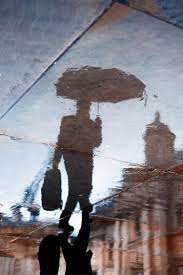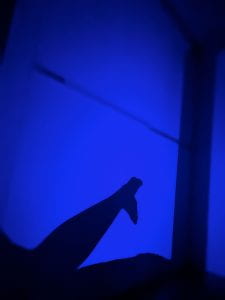










For set 2, my inspiring artist is Craig Whitehead. He is a British photographer based in Cambridge. His nickname is Sixstreetunder. This is probably because he mostly takes street photos. He was born in the 1980s, so he experienced the rising pop culture of that time period, probably using those experiences as inspiration in his photography. According to MPB, “Craig Whitehead is one of those photographers. Craig’s photos are beautifully colored, all candidly shot with a unique sense of composition and humor. He has been compared to other photographers, like Saul Leiter and Ernst Haas, who paved the way for color in street photography” (MPB.com). In this quotation, it is revealed that Whitehead is a photographer who involves a lot of color in their works while having a unique sense of composition and humor at the same time. The humor in his photos is unlike those of others, making him extremely influential in the field of street photography. Me, I chose Craig Whitehead as my inspiration because his photography reflects my vision statement very well. Although not all of his photos include technology, the general context of his photos suggests many aspects of urban life. His photos are very fun to look at since they show things that may seem quite unrealistic or uncanny, despite everything being from real life. In his photos, he uses varied types of reflections, such as water reflections and glass reflections. According to Whitehead himself: “My biggest influence comes from my background in Illustration; the way I work now and my obsession with textures and layers are exactly how I would construct my illustrations. My love of Saul Leiter and Ernst Haas reflects that. I also take inspiration from the lighting work of Gregory Crewdson and Ryan Schude. I strive to find situations with dynamic, dramatic light and their sensitivity to color. With regards to social media, I take most of my inspiration from minimal and abstract photographers. I would always favor a smart composition with a mediocre character than a photo of a real character poorly composed.”(The Raw Society). This quotation lets us see many aspects of Whitehead’s work ethic in the different stages of photo taking. We can see the photographers he selects for his inspiration in the connecting stage, how he incorporates inspiration in the responding stages, and how he uses techniques in the creating stage. Many of Whitehead’s photos can be found on his Instagram page, where he shares his work with the rest of the world.

Photo: à g. © Craig Whitehead ; à d. © Joshua K Jackson
I am going to analyze the photo above because I think it incorporates more than one element of reflection. At first, this photo seems extremely abstract because it is hard to see a subject and background within vivid colors. However, upon closer inspection, it can be seen that there are two distinct silhouettes in the mess of colors. The shape of the object that is shadowed on top of the silhouette appears to be an umbrella in the given context. Circular patterns on the left of the image seem like ripples of water, the kinds of ripples that seem like rain splashing on the ground. Also, on the left of the image, there is a red shape that is eye-catching. Due to the spacing of the photo, it seems like this red shape is behind the silhouettes. In the context of this photo, this red shape is most likely a telephone box due to the fact that Whitehead was probably in a British city where telephone boxes are common on the street. In addition, there are distinct white/yellow lines that divide the photograph into sections. The positioning of the lines makes the photo seem like there is a three-dimensional form. This is odd because it seems like the rest of the photo is two-dimensional, and the lines are out of place. In general, this photo can be divided into halves. The halve on the right is dark colored, so the only clearly visible objects are the 3-dimensional lines. The texture of this half is rocky and rough, like the texture of gravel pavement. It gives the photo a hard and empty feeling. In contrast, the left half is brightly colored purple, displaying the two silhouettes and the red telephone box. The texture of this half is watery and smooth, probably full of motion in real life. This half of the photo contrasts the other half by being full of life and colors. The contrasting halves create a strong contrast and a wide tonal range. In terms of technique, this photo was most likely taken during the evening or at night. The context suggests that the photo was taken in the streets. The extreme clarity of the photo means that is photo was likely taken with a narrow aperture of around f/16. Parts of the photo around the silhouettes are not blurred. Since the photo doesn’t look extremely grainy, the ISO was most likely around 200-400. The white balance of the photo seems to be fairly moderate, as the photo does not look too warm or too cold. I can connect this photo to the concept of silhouette photography. For example, photographer Nicolas Bouvier often takes silhouette photos of people in an evening setting. My own photography from photo 1 also has a set that focuses on silhouettes. The difference between this photo and the photos of Bouvier and I are that it shows a reflection of silhouettes and not the actual silhouettes themselves. Overall, I think this photo conveys the concept that love is full of complexity and mixed emotions because the photo shows a vivid half and a dark half around the silhouettes of a couple. Through the white/yellow lines, it shows that people often have unique differences in relationships. In my interpretation, the little ripples created by the rain can symbolize how little things are important in relationships because many little ripples can cause a smooth puddle of water to become full of motion, beautifying the reflection of the silhouettes in the once smooth puddle of water.











